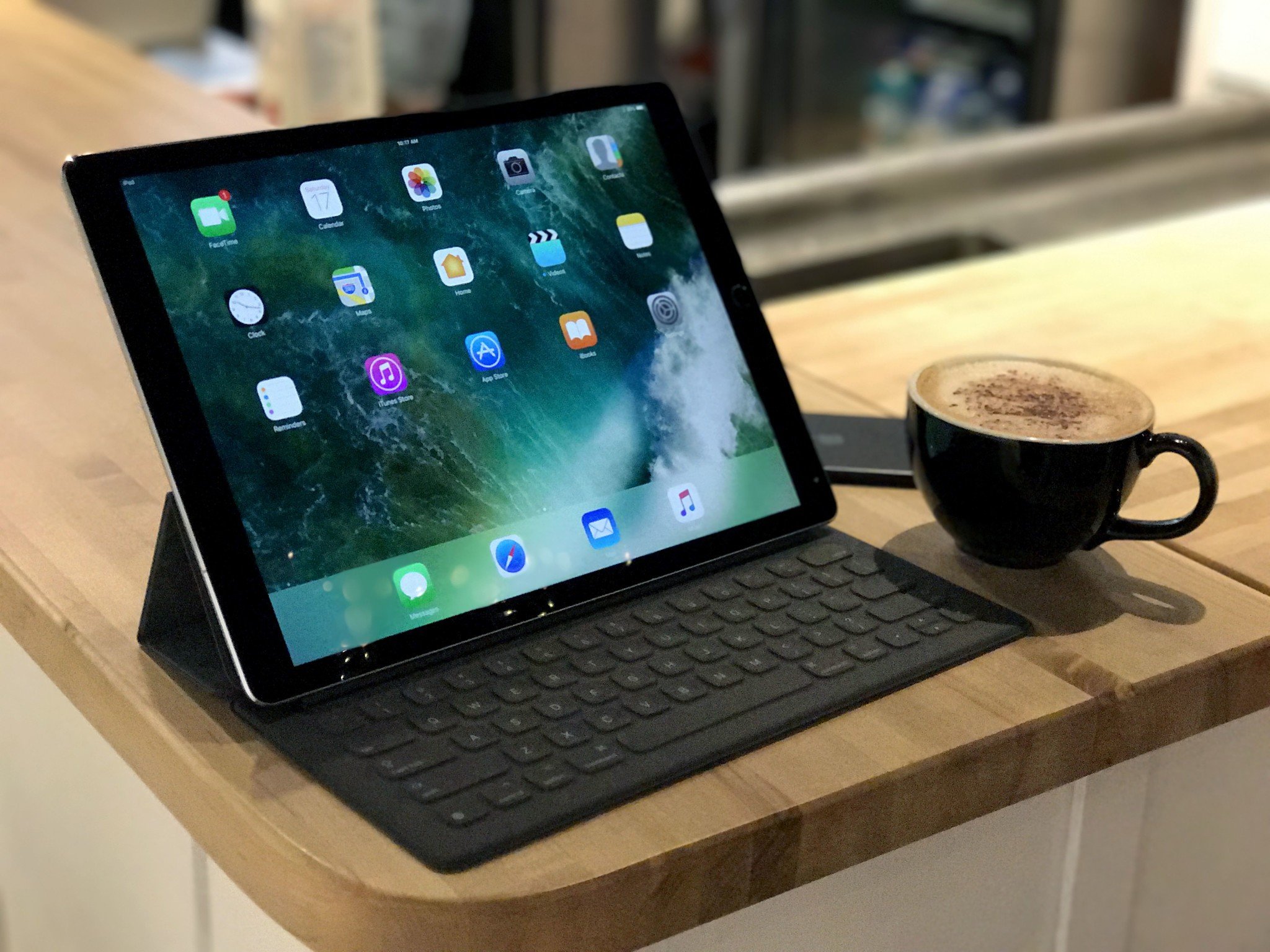"That's no MacBook" was my reaction to seeing the original 12.9-inch iPad Pro back in the fall of 2015. It was a Star Wars reference, of course, but the gist was this: We finally had an iPad — and an iOS device — that could double as a "notebook". Not perfectly, and not in every way for everyone, but without sacrificing what made it an iPad and what's so great about iOS.
If the original 12.9-inch iPad was Star Wars, the new 12.9-inch iPad Pro (2nd generation) is Empire: more serious and, for my money, just plain better. (And yes, when iOS 11 ships this fall, it will indeed be "fully operational".)
Unlike its smaller sibling, the 10.5-inch iPad Pro, the display size on the 12.9-inch model hasn't changed. (You can tell by the name). But thanks to the previous version's age, the display technologies have changed even more. It not only gets the new ProMotion 120Hz adaptive refresh rate but catches up on DCI-P3 wide-gamut color and True Tone ambient color temperature matching too. And the camera — well, it hyperspace jumps from the old, anemic iPad Air 2 system the original 12.9 was stuck with to the state-of-the-art iPhone 7 system.
It all comes together to make the 12.9-inch iPad Pro yin to the 12-inch MacBook's yang. Not an iPad-in-Mac's clothing but an iPad that can do a lot of what the Mac can, and a few major things it can't.
But is it enough? Is the 12.9-inch iPad Pro (2nd generation) the powerful Apple portable you've been looking for?
For people who want:
- Laptop alternative.
- Most advanced LED panel on the planet.
- Blistering fast processors
- iPhone 7-level camera system
- Access to all the tablet apps in the App Store
- Pro-level tablet computers
Not for people who want:
- Smaller, more portable tablet
- OLED panel
- x86 processors
- Access to native Mac or Windows apps
- Cheap video and gaming tablets
In brief
The 12.9-inch iPad Pro (2nd generation) is now even bigger on the inside. That includes a significantly faster processor in the A10X, a more advanced display with 120Hz adaptive ProMotion, and a much better camera system — the same one found on iPhone 7. All it's missing is the rose gold option available on the 10.5-inch model.
iMore offers spot-on advice and guidance from our team of experts, with decades of Apple device experience to lean on. Learn more with iMore!
Taken together, it makes what was already a viable laptop alternative into a compelling one, especially for creatives. With the free iOS 11 update coming this fall, drag-and-drop, Files.app, ARKit, and more will make iPad Pro a real alternative for a wider range of professionals as well.
Given its size, the 12.9-inch iPad Pro may not offer maximum portability — there's a 10.5-inch model for that — but it does offer maximum potential. Absent a trackpad and Xcode, it's also the closest thing Apple offers to a touchscreen Mac.
If I could only have only one Apple computer, this would be it.
About this review
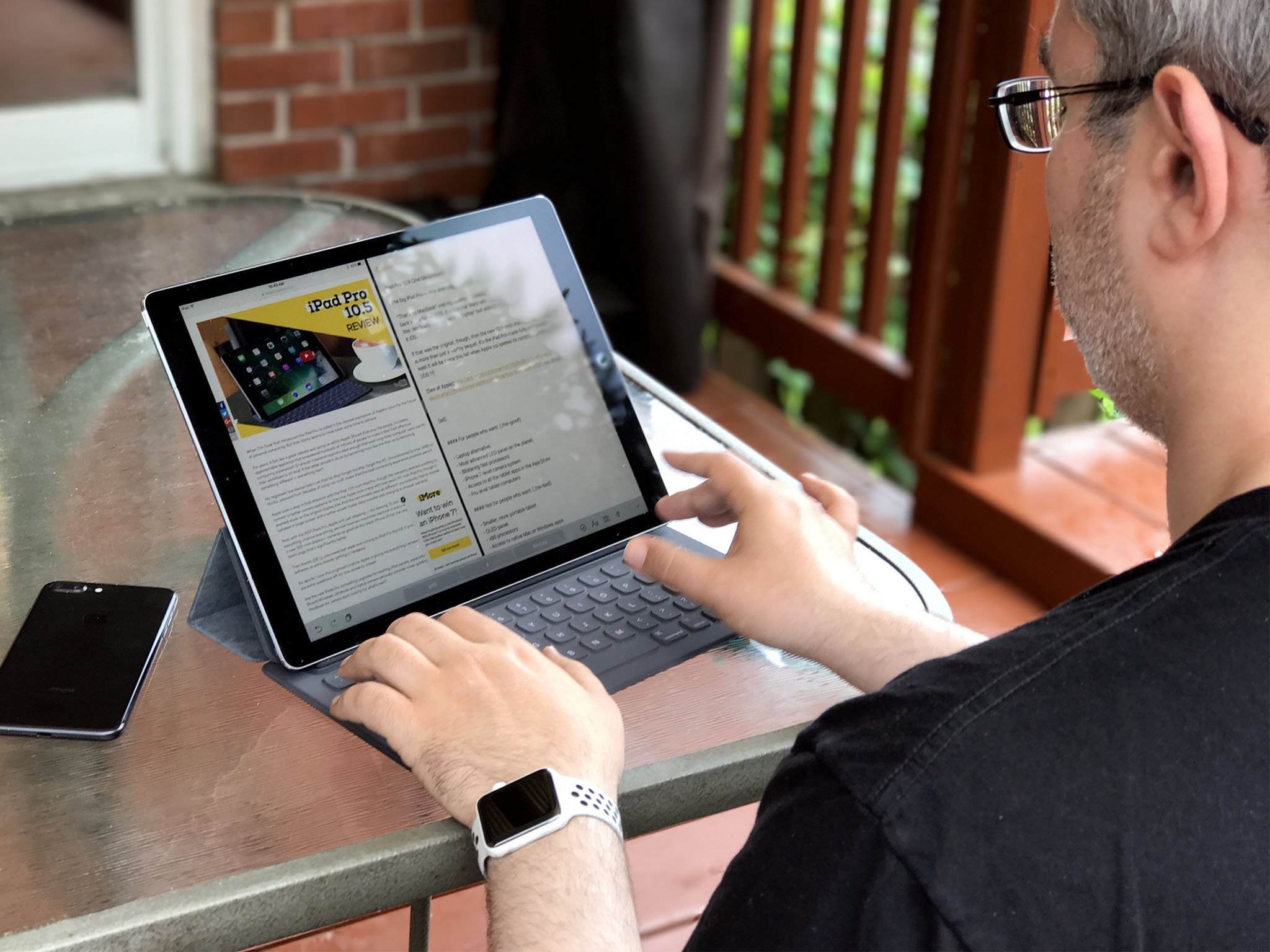
My colleague Serenity Caldwell and I had a chance to try out both the new 10.5-inch and the updated 12.9-inch iPads Pro following Apple's WWDC 2017 keynote.
Since then, I've been using 12.9-inch iPad for about a week. That includes everything I normally do for iMore, Mobile Nations, and personally — writing, drawing, gaming, taking photos, filming, reading, watching videos, working at coffee shops and on decks, and chilling on the couch. I've used it on Wi-Fi and on LTE (on Rogers in Montreal).
In other words, I've lived on it. And yes, that includes writing this review. On tables. On my lap. Legs crossed. You name it.
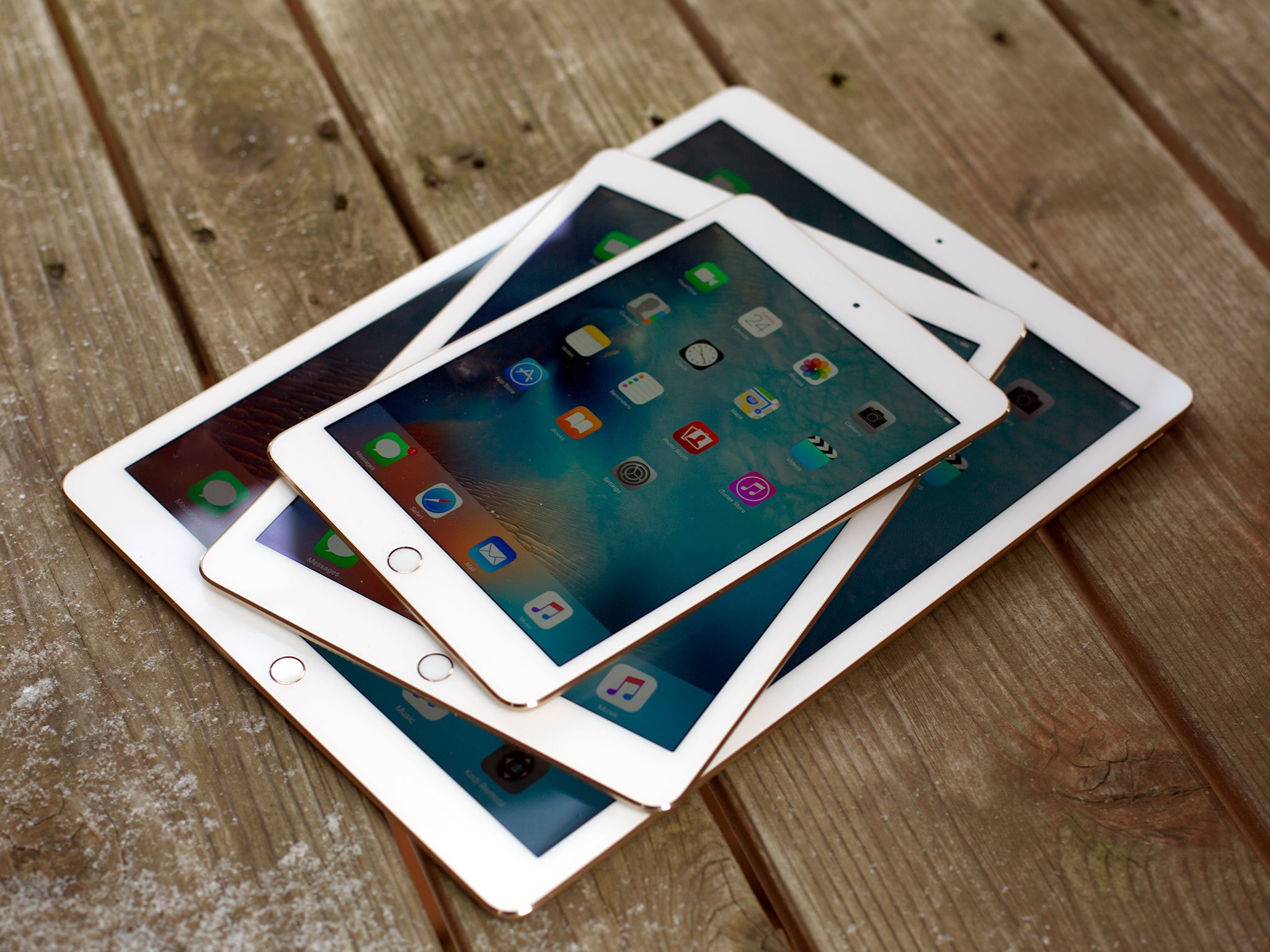
Previously, on iPad...
The new iPads Pro build on all the iPads that have come before. Rather than repeat material from any of those reviews, please find the most recent ones here:
- 10.5-inch iPad Pro review
- 9.7-inch iPad (5th generation) review
- 9.7-inch iPad Pro review
- 12.9-inch iPad Pro review
- iPad mini 4 review
- iPad Air 2 review
- iPad Air review
iPad Pro 12.9 display
The original 12.9-inch iPad Pro's display was impressive based on its size alone. At 2732-by-2048 and 264 pixels-per-inch (ppi), it was more expansive than any iOS device that had ever come before. Expansive enough to show two regular-sized iPad apps in 50/50 split view.
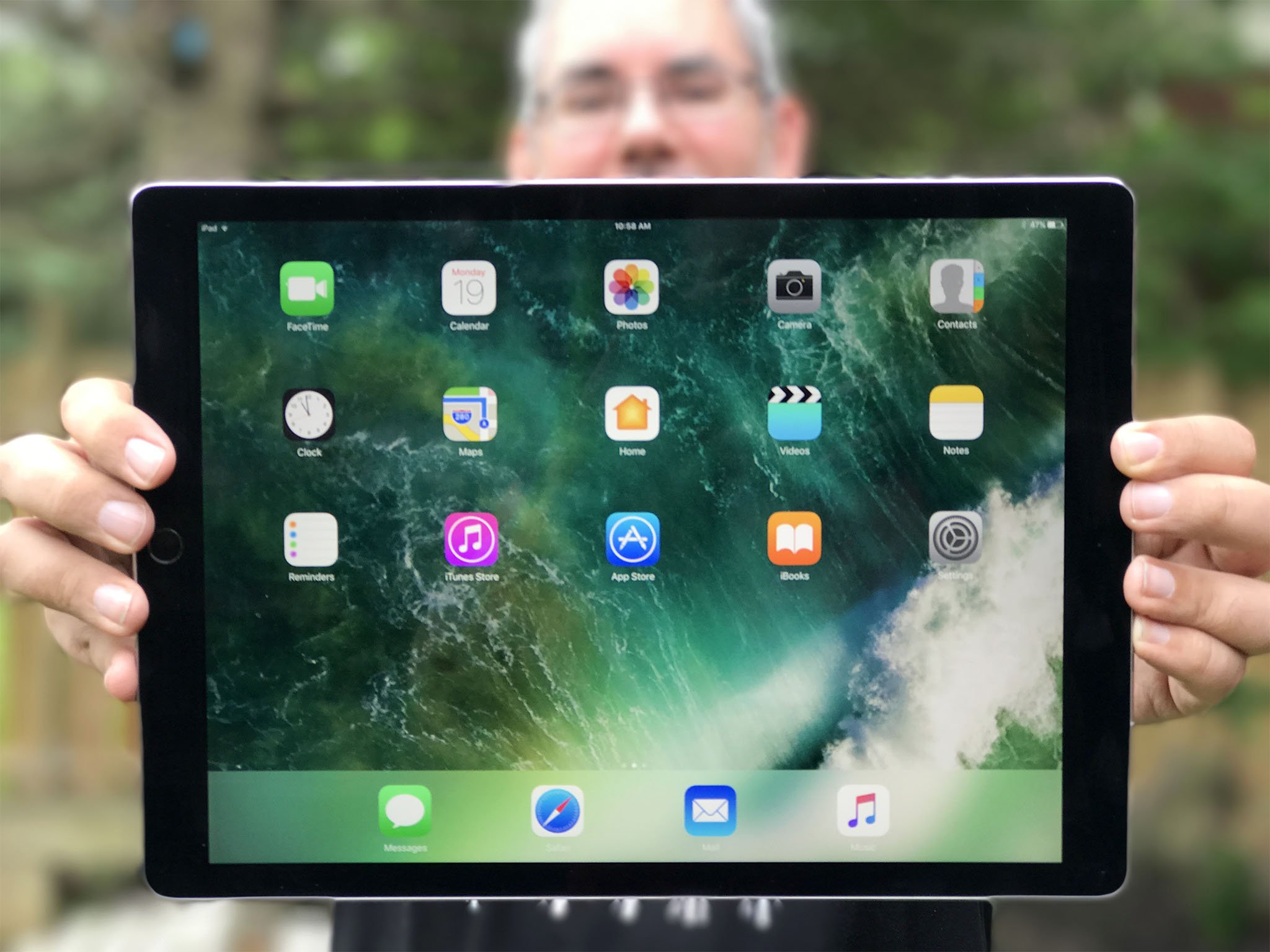
Then came the 9.7-inch iPad Pro and, while its display was the same size and density as previous-generation iPads non-Pro, its DCI-P3 wide-gamut color and True Tone ambient color temperature matching made it qualitatively better.
Now the new 12.9-inch iPad Pro keeps all the original's pixel quantity but adds all that quality. And then some: DCI-P3 with deeper reds, magentas, and purples and brighter greens. Check. True Tone that makes the display look paper white, whether you're in a room with yellow incandescent lighting or cold blue iridescent. Check.
By themselves, both are impressive enough technologies that, once you get used to them, you never want to go back to the duller, off-color displays that preceded them. But then you add high dynamic range (HDR) and ProMotion, and the game changes again.
HDR is mostly aspirational right now. Thanks to a new 600 nits of brightness — 50% more than the original — the new iPad Pro display can show more detail in both the light and shadow without blowing them out or muddying them up. It's been supported for years in photography, but iPad Pro supports it in video now as well. There just isn't much HDR content available for iPad yet.
As I mentioned in my 10.5-inch iPad Pro review, I was able to watch a Dolby comparison of The Force Awakens trailer in 4K vs 1080p HDR. The HDR version, despite being lower resolution, blew away the 4K version. The difference was eye-popping.
That's why I'm happy Apple is offering the support now, so iPad Pro will be ready to go once iTunes, Netflix, Amazon, and the like go all-in.
ProMotion, though, will blow you away right now. And, if anything, it's even more impressive on the 12.9-inch screen.
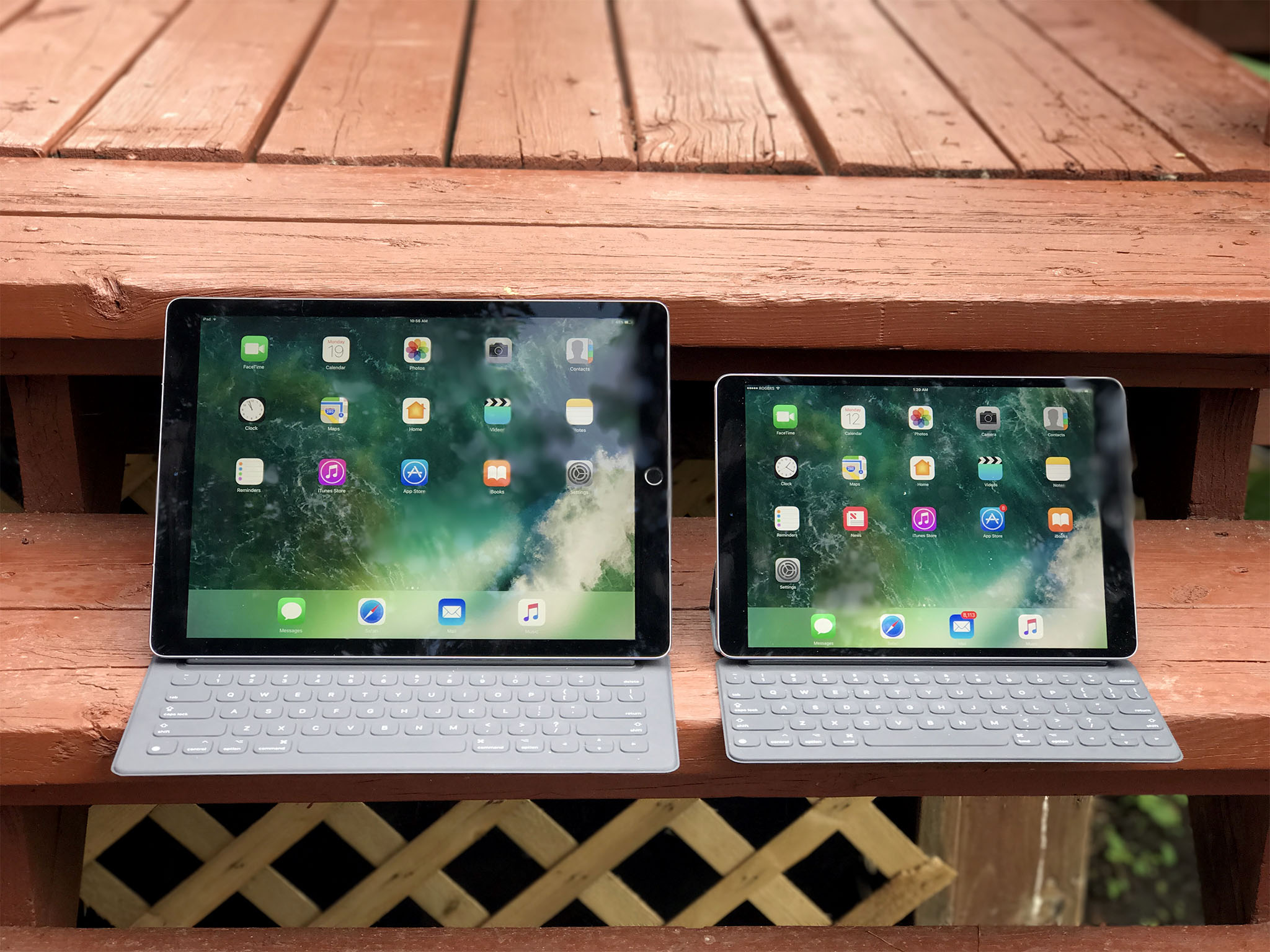
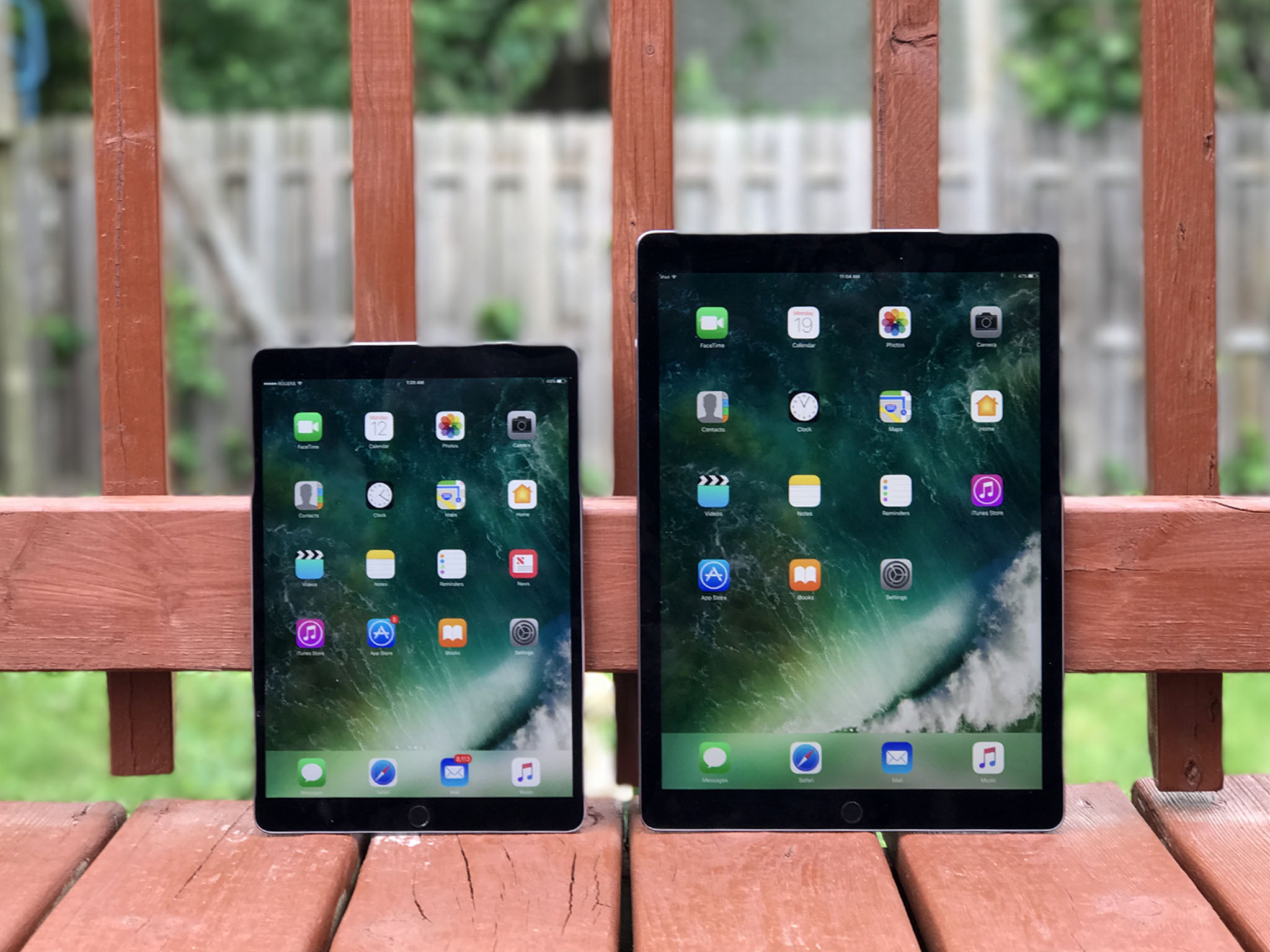
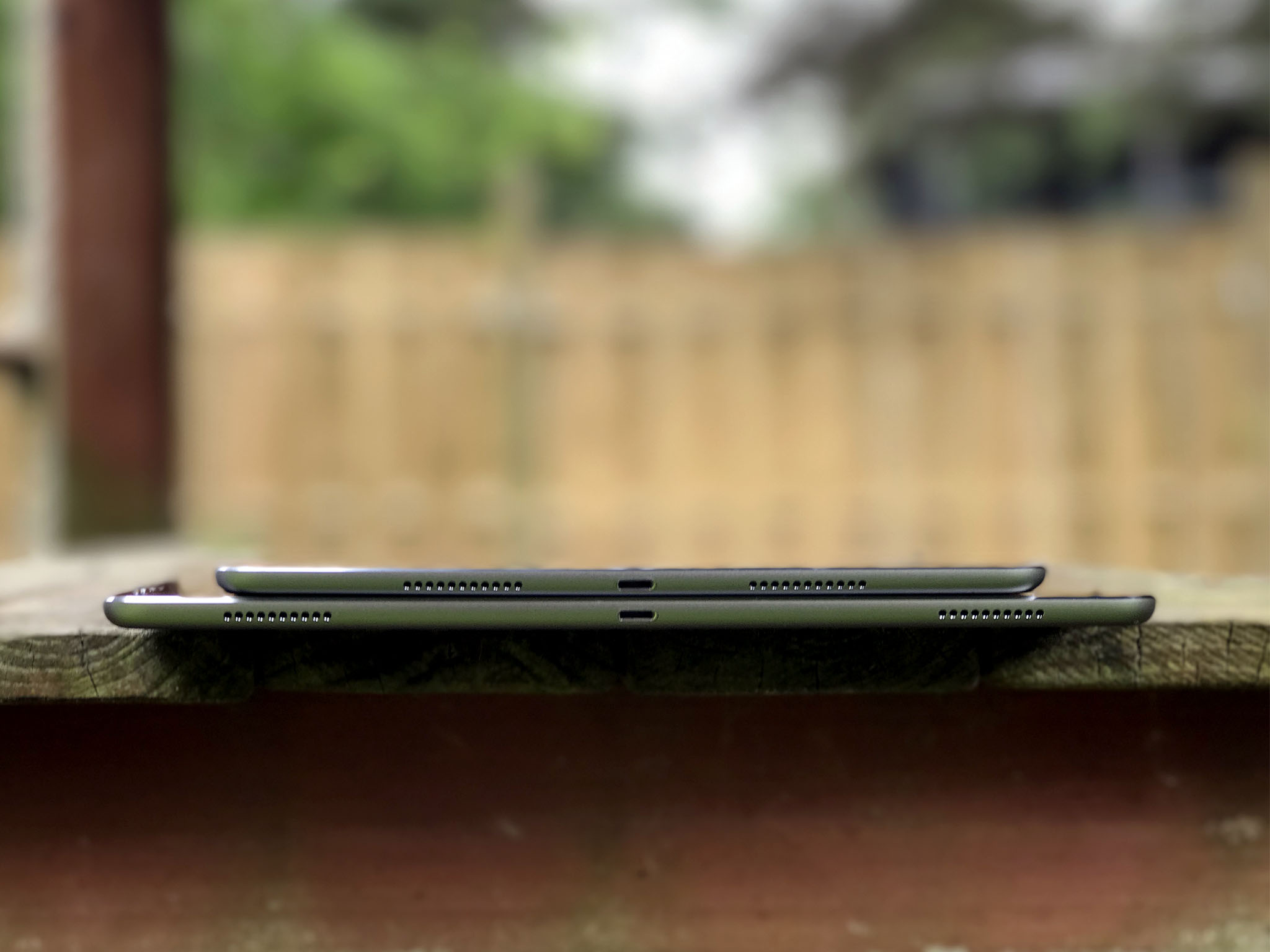
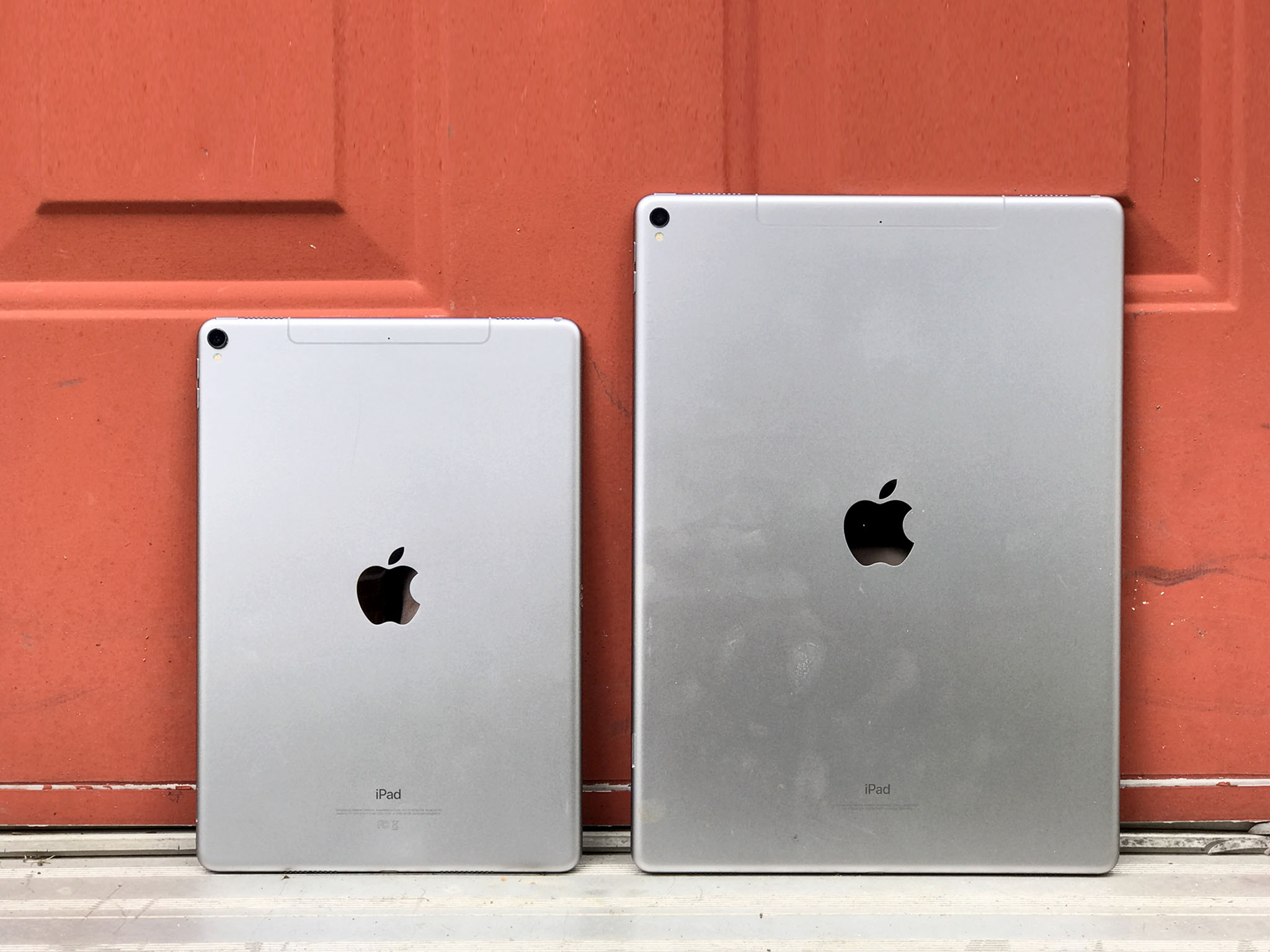
ProMotion is Apple's name for its new 120Hz adaptive refresh technology. Previously, the 9.7-inch iPad Pro could ramp its refresh rate down from the usual 60Hz to 30Hz for relatively static content like photos. Since the display is the single biggest power draw on the iPad, that let it save as much power as possible.
The new iPad Pro goes both ways. Not only can it ramp down; it can ramp all the way up to 120Hz. That may negate some of the power savings, but it opens the iPad Pro up to incredibly smooth video for things like scrolling and incredibly low latency for Apple Pencil.
It's not just hardware either. iOS includes a lot of new smarts that lets it, for example, immediately jump to 120Hz when the Apple Pencil touches down on the display surface. It also lets it show a 24FPS movie without the annoying "soap opera" effect. Thanks to math (24x5=120), iPad Pro can keep a 24FPS movie playing in one view while letting Apple Pencil scroll at 120 in another. Oh, yeah.
All of this "just works", though developers can ask for specific refresh rates if their apps and content would benefit from it. iOS will then serve as a dispatcher and coordinator, giving and matching resources for the best possible combination at any time.
Toss in an all-new, all-low 1.8% reflectivity rate and the difference in experience is remarkable. It may not be as night-and-day transformative as Retina, but it's night-and-dawn close — especially on the 12.9-inch display.
ProMotion: Everything you need to know
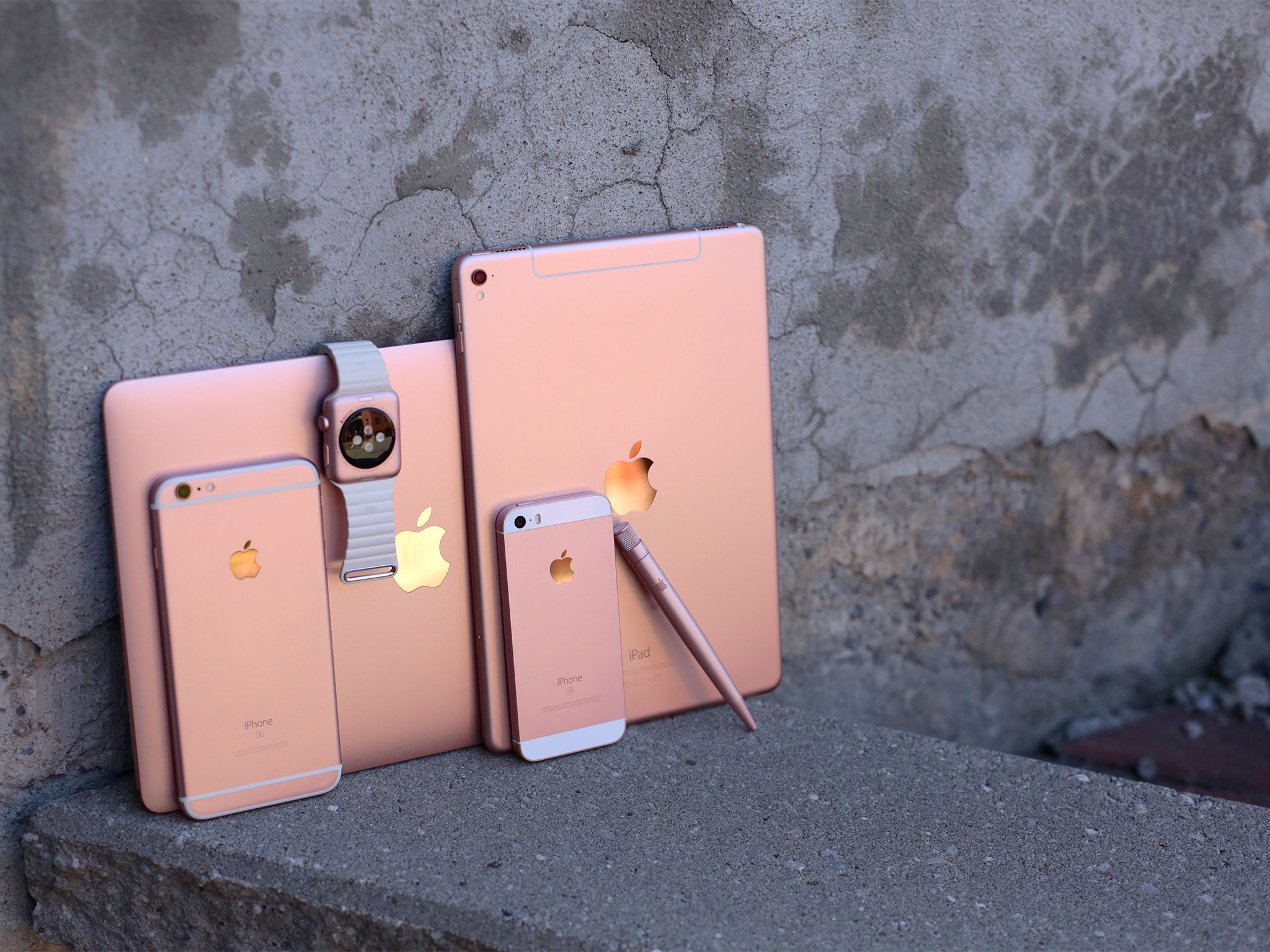
Rose-less gold
This year, the iPads Pro are identical in every way but size. And rose gold. You can get the 10.5-inch model in all four colors, but you can only get the 12.9-inch model in (champagne) gold, silver, and space gray.
It might seem like a silly, superficial thing, but for those who like rose gold and like to color match their Apple gear, it's frustrating. Especially since the 12-inch MacBook shows how rose gold looks fire-hot on larger sized mobile devices.
Hopefully Apple will offer it in the future.
iPad Pro 12.9 Touch ID
iPad Pro didn't get the new virtual Home button introduced with iPhone 7. Instead, it keeps the traditional mechanical Home button but does add the second-generation Touch ID sensor from iPhone 6s.
Since there's no 3D Touch or Taptic Engine on the new iPad Pro (see below), Apple would have had to build force and feedback into the Home button for it to work.
It'd likely be "expensive", but I'd love it. Not only would it remove a potential point of mechanical failure, but it would be consistent with the iPhone experience. Which, yeah, felt weird to me at first but now feels like the new normal.
Meanwhile, the second-generation Touch ID is twice as fast as the original. That means it unlocks your iPad in an instant, authenticates you for apps almost immediately, and doesn't leave you hanging (touching?) when you want to use Apple Pay or authorize other purchases.
So where the Home button isn't iPhone-level yet, Touch ID absolutely is.
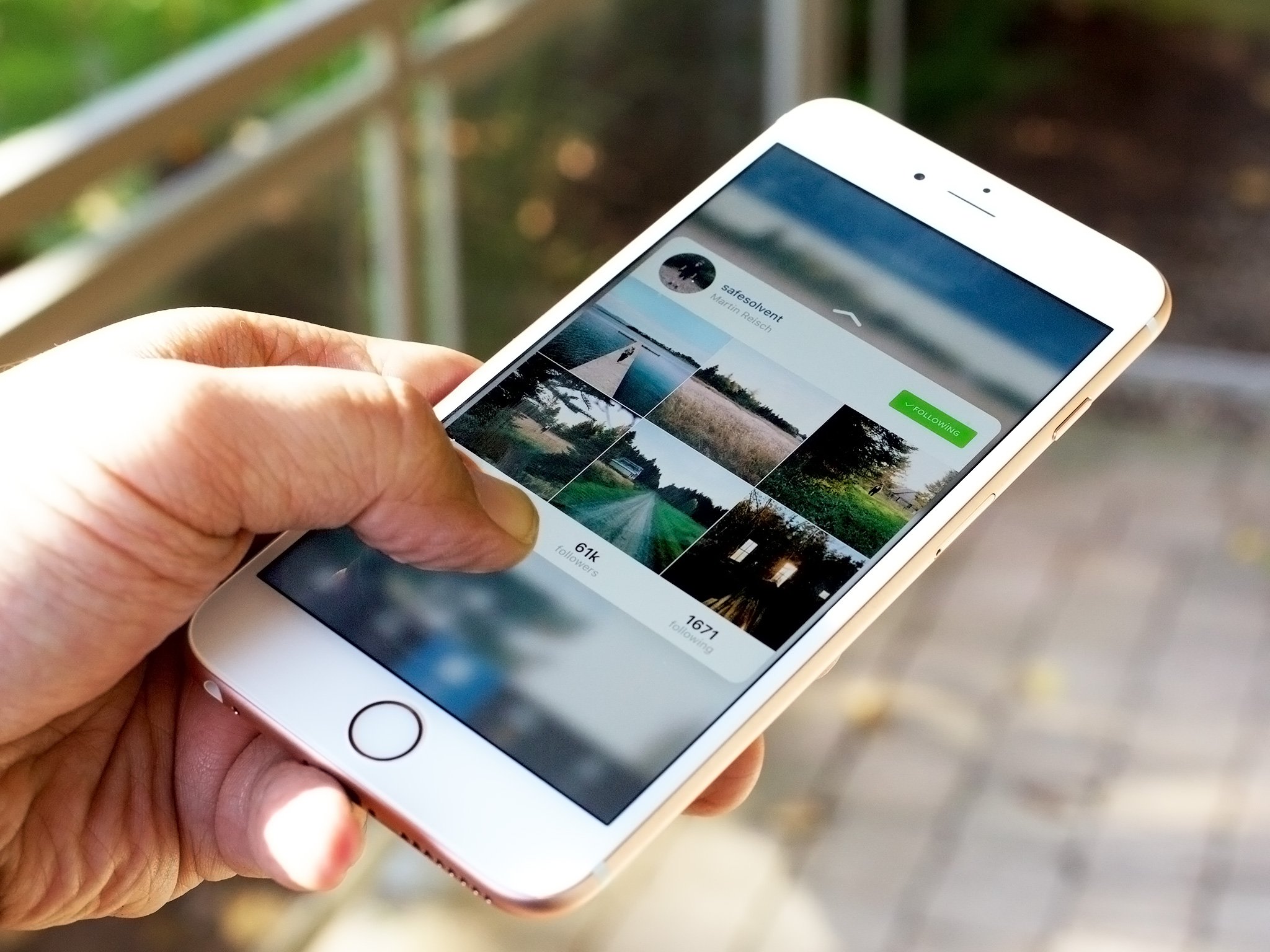
3D Touch-less
While iPad Pro offers pressure sensitivity through Apple Pencil, it doesn't offer the built-in 3D Touch of iPhone. That's likely due to the current technology not effectively scaling to the bigger screen, the lack of navigation necessity, and the potential collision with Pencil technology and economics.
If that explanation is too short and you want to read more:
iPad Pro 12.9 chipset
Pushing 3,145,728 pixels requires a good amount of power. Pushing them with incredible speed and smoothness, especially when they're rendering complex imaging and 3D, requires serious power. A9X on the original 12.9-inch iPad did a great job. A10X does it better.
All the system animations and interactions don't just feel faster, they feel fuller. Almost like A9X was being just a little abrupt to keep up while A10X is flying... casual. Scrolling is impeccable and tracking feels like the pixels are elastic banded to your fingers. Also, where computationally expensive effects and rendering were speedy on A9X, now they feel pure speed force.
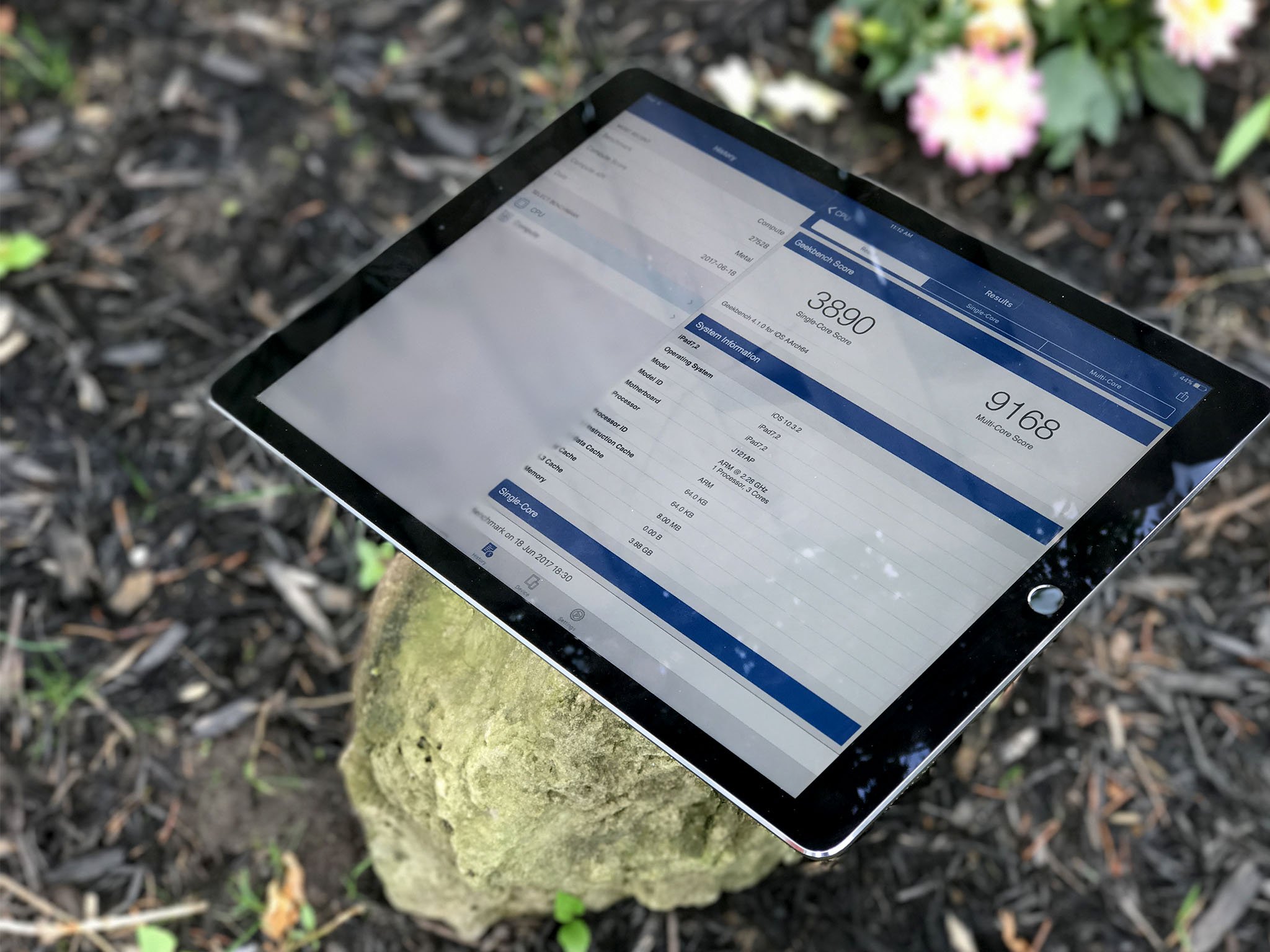
A10X uses the same "fusion" system introduced late last year with iPhone 7. It pairs high-performance cores with high-efficiency cores. iPhone 7 had two such pairs. iPad Pro has three. And a twelve-core graphics processor.
By the numbers, Apple claims the A10X CPU is 30% faster and the GPU is 40% faster than A9X, all while maintaining the same 10 hours of battery life as every iPad before it.
Battery life will take a while to get a firm grasp on, but the speed is immediately apparent.
I benched the 10.5-inch for geeks already:
- Single-core: 3,935
- Multi-core: 9,299
- Metal: 27,131
For the sake of thoroughness, here's how this 12.9-inch measures up:
- Single-core: 3,890
- Multi-core: 9273
- Metal: 27,528
And by way of comparison, the original 12.9-inch:
- Single-core: 3,068
- Multi-core: 5159
- Metal: 14,906
On a display as large as iPad Pro, the single-threaded operations — which put even more recent chipset competitors to shame — ensure immediate responsiveness from interface and interactions. And the multi-threaded operations — which are still more than competitive with recent competing silicon — ensure performance from even the most demanding apps.
So when using iPad Pro as an ultra-light PC, it feels almost over-powered. When using it as a giant canvas or window into augmented reality (AR), it just feels powered.
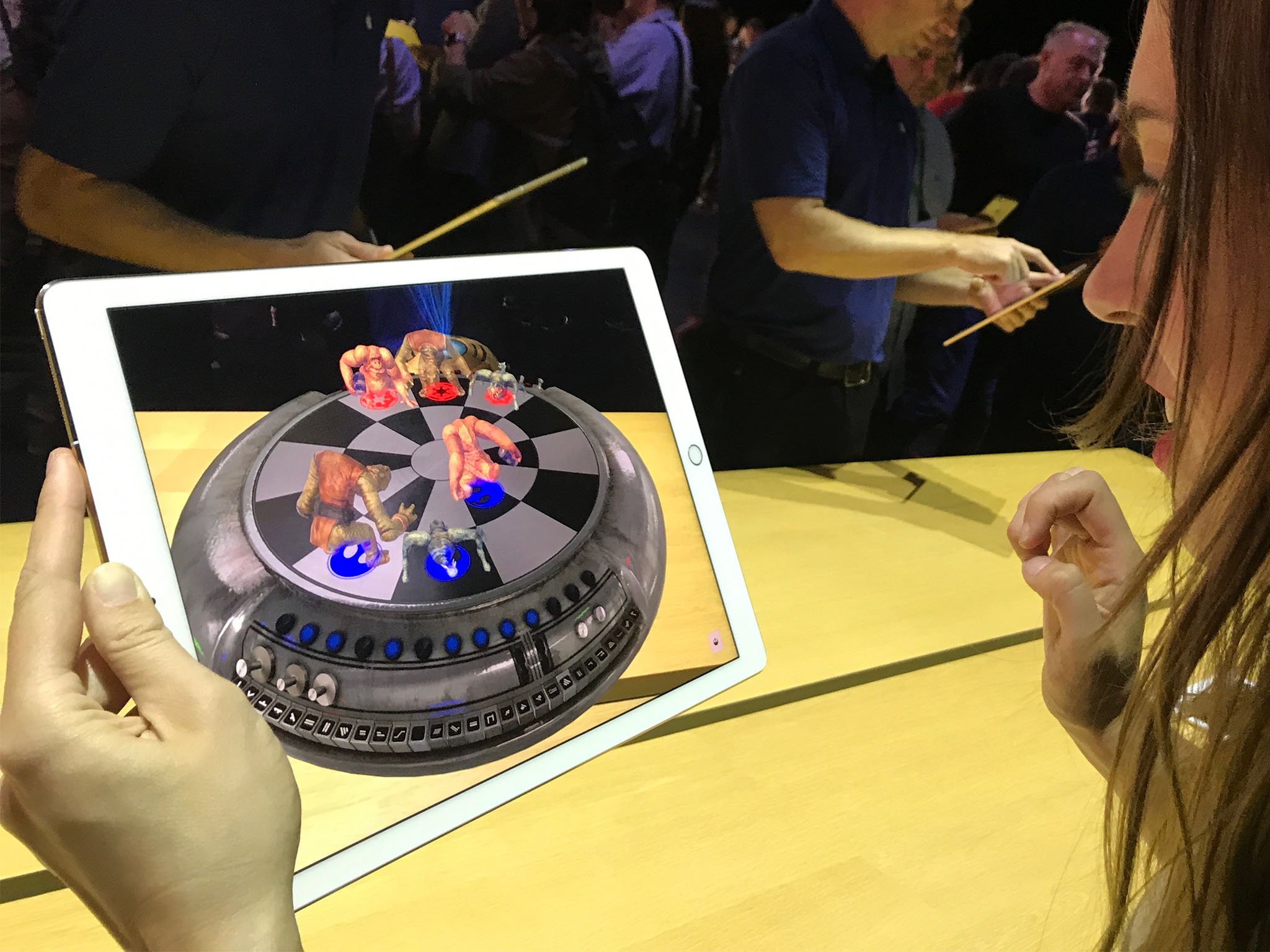
I mean, finger painting with deformation effects isn't anything I expected to see on stage this year, let alone play around with in my hands.
Apple also claims the shared memory architecture of A10X, combined with Metal, provides for applications that PCs, with split CPU/GPU memory, not only can't match but simply can't do. It's part of the reason why Apple positions iPad Pro as being more powerful than many PC laptops.
Those are all nebulous terms to me, as is "PC replacement". I prefer PC alternative.
Where the 10.5-inch model feels like a tablet that you can snap in and use as a tiny laptop when you want to, the 12.9-inch model feels like a laptop you can snap out and use as a big tablet when you want to.
Like I said in the 10.5-inch review, I rarely if ever saw any apps peg the A9X. I've only ever seen Portrait Mode and maybe some incredibly intensive photo filters peg the A10. I don't know what it would take to peg the A10X. But I can't wait to find out.
iPad Pro 12.9-inch radios
Wi-Fi on the 12.9-inch iPad Pro remains unchanged from the original: 802.11ac, multiple-in, multiple-out (MIMO) Wi-Fi at up to 866 Mbps. The cellular radio, though, has gotten much better. And because the orginal 12.9-inch predates the 9.7-inch, the difference is even greater between generations.

5 bands and 300Mbps greater, for a total of 25 bands at up to 450Mbps. That's all theoretical, of course, but it does translate into using your iPad Pro in more places and, hopefully, at much higher speeds.
Also, since Apple is doing all of this on a single modem, not two different modems like iPhone 7, if you buy an iPad Pro with LTE, you can use it on the still-CDMA-bound Verizon and Sprint in the U.S.A, and any GSM carrier anywhere and everywhere else.
No doubt we're all paying the Qualcomm tax for that simplicity, but it's a simplicity that's worth paying for for now. Especially because Apple chooses not to pay or pass on that tax for the 12-inch MacBook or MacBook Pro.
That makes the iPad Pro with LTE effectively the only truly mobile device in Apple's lineup.
iPad Pro 12.9 cameras
The first 12.9-inch iPad Pro was "pro" in almost every way — except for the cameras. The Apple A9X image signal processor (ISP) worked its usual automagic, but it didn't have much to work with. The new 12.9-inch iPad Pro optics are a very different story.
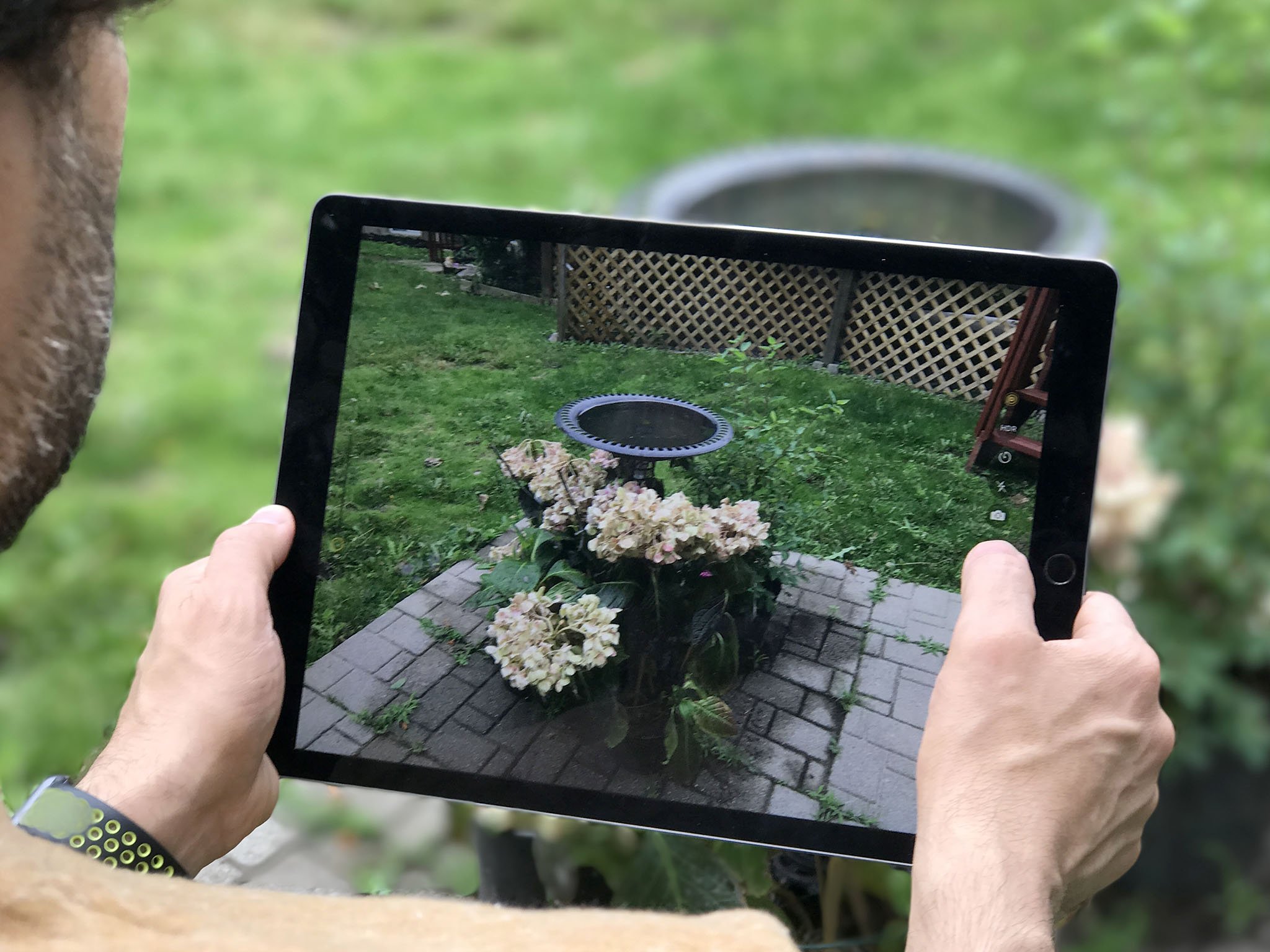
With a 12-megapixel, 4K rear-mounted camera complete with optical image stabilization (OIS) and a 7-megapixel, 1080p front-mounted camera, it's every bit as good as iPhone 7. And yes, that meansApple is finally taking iPad photography seriously, even on its biggest screen.
The difference is most apparent in low light. Because I've been shooting almost exclusively with iPhone 7 Plus since September the amount of detail this camera system can pull from low- or next-to-no-light doesn't drop my jaw the way it used to. But it still impresses me. Especially on a tablet — and extra especially on one that's come as far as the 12.9-inch iPad Pro.
Here's what the rear camera can pull in really low light. 12.9-inch iPad Pro (2nd generation) (top left), iPhone 7 Plus (top right), 12.9-inch iPad Pro (1st generation) (bottom left), and 9.7-inch iPad Pro (bottom right).




Full-sized crops: 12.9-inch iPad Pro (2nd generation), iPhone 7 Plus, 12.9-inch iPad Pro (1st generation), 9.7-inch iPad Pro.
In addition to the higher resolution, you also get DCI-P3 wide color gamut, the ability to stitch together 63-megapixel panoramas, the ability to shoot 4K (2160p) video or up to 240FPS slow motion, and support for Live Photos. (Which will be getting an Instagram-style boomerang and other effects update with iOS 11 later this year.)
I do miss the dual camera system found on iPhone 7 Plus. A lot. 2x optical zoom and Portrait Mode bokeh effect are the reason why I haven't touched my DSLR going on nine months. I wish Apple had included the "tele" lens on the 12.9-inch iPad Pro as well, for both the photography and the "depthy" data it collects.
For many, none of that will matter because they already have an iPhone or high-quality camera phone, or they still buy into the social stigma associated with tablet photography. (Especially when that tablet is as big as a Dungeons & Dragons tome.)
For others, though, including people who want a massive viewfinder to ensure tack-sharp photos, super-precise macros, and perfectly focused 4K video, it'll be the best thing ever.
Just look at the difference on the back of the 10.5-inch iPad (middle) compared to the old 12.9-inch model (bottom) and even the old 9.7-inch model (top).
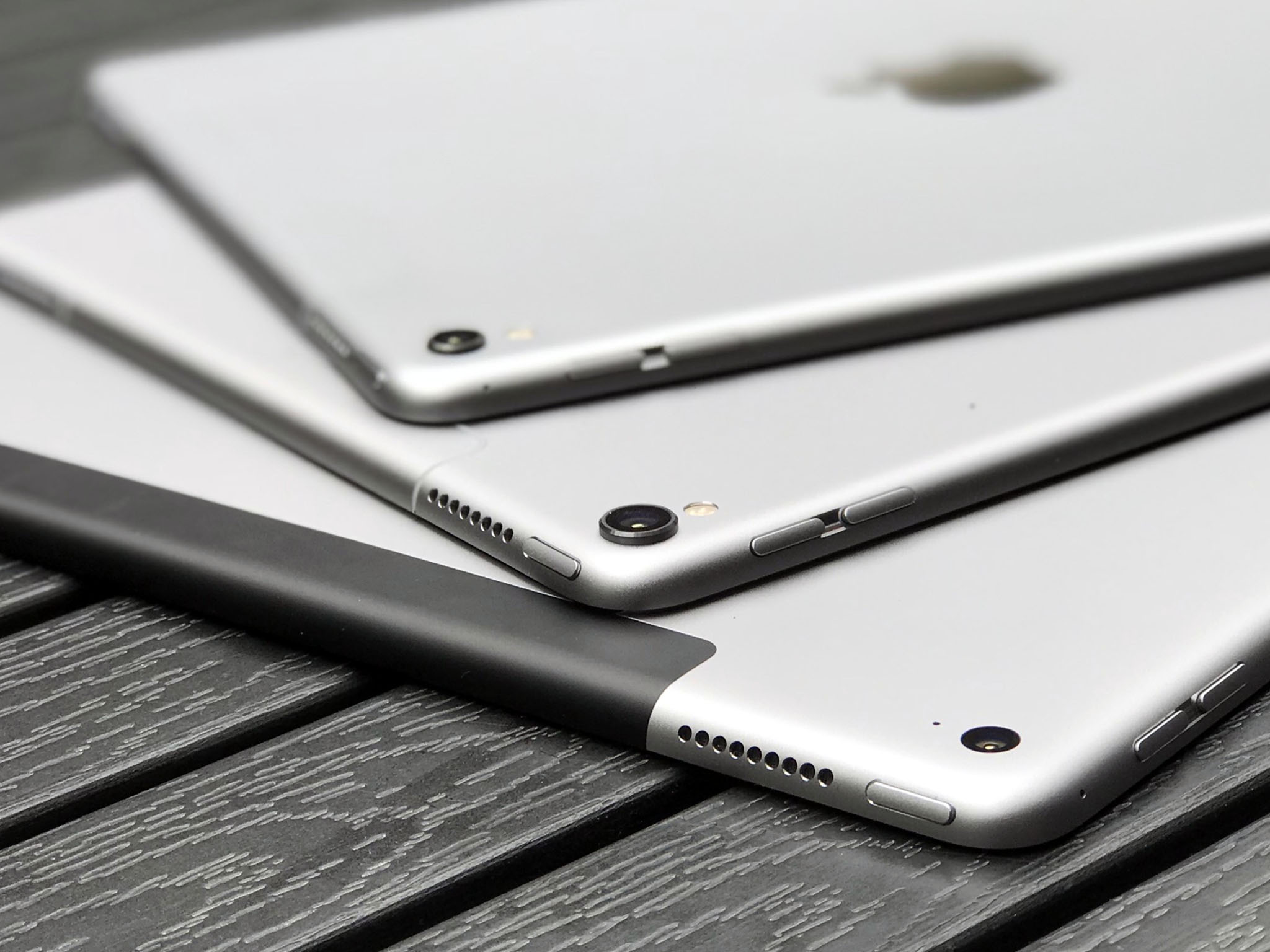
That bump don't lie.
iPad Pro 12.9 apps and accessories
iPad Pro can use any of the hundreds of thousands of tablet-optimized apps in the iOS App Store. The amount of apps that actually support the even bigger display of the 12.9-inch iPad Pro isn't anywhere nearly that many, but it's grown since late 2015 and now, with this new model, I'm hopeful it will keep growing. Likewise apps designed to really take advantage of this next-generation hardware.
I've already called out Affinity Photo, announced alongside the new iPad Pro, a couple of times. But it deserves it, both for its incredible feature set and, hopefully, its sustainable pricing — $20.
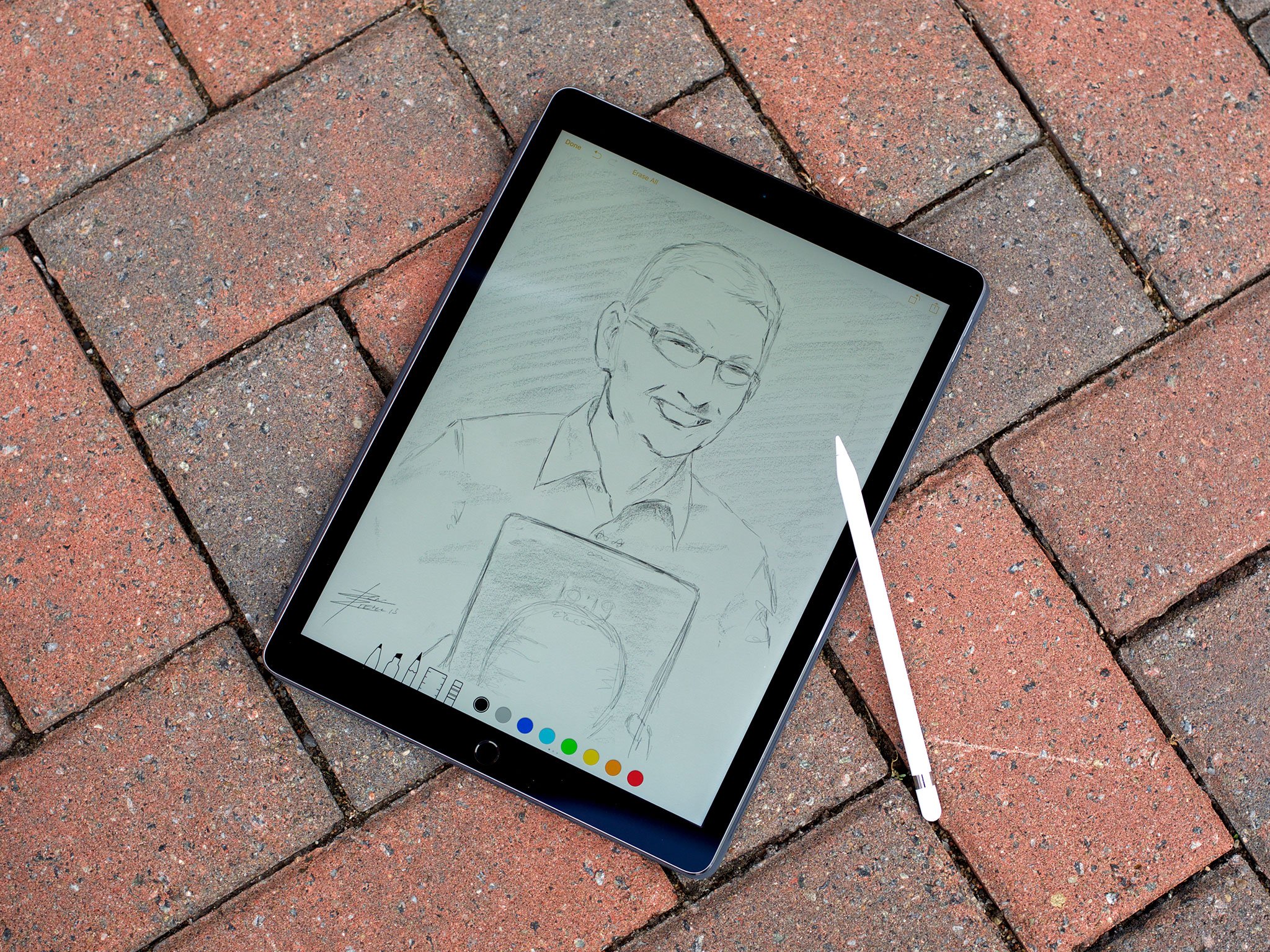
There's no difference for Apple Pencil this time around and, if there's any to the Smart Keyboard, I can't feel it. Even with the 10.5-inch model offering a "full-sized keyboard experience", the 12.9-inch model remains much fuller.
If you're upgrading from the old 12.9-inch you'll have to make sure whatever you had fits with the camera bump on what you have now. Otherwise, the new model is broadly compatible with existing Lightning and Bluetooth gear, and both can connect to and control the increasing number for HomeKit accessories on the market.
iPad Pro 12.9 and iOS 11
The 12.9-inch iPad Pro running iOS 10 is a competent PC alternative. Running iOS 11, which goes into wide release this fall, I expect it to be a compelling one.
iOS 11 is the biggest update for iPad that Apple has ever offered. It may not be a complete iPad OS, and it may still have the same icon-based launcher experience that shipped with the original, but everything else about the windowing and workflow experience has improved.
That includes a new, always-accessible Doc and a new App Switcher that's not only integrated with Control Center but saves all your spaces (side-by-side layouts). Also, drag and drop. And not just a carryover from the traditional mouse-based implementations of the past — a new one that feels born for multitouch.
Apple Pencil will be getting Instant Notes, based on a simple tap from the Lock screen, and Instant Markup for screenshots. You'll be able to take hand-written notes in English and simplified Chinese and, thanks to optical character recognition (OCR), search for them later. And you'll be able to snap a shot of a document, have it replicated on-screen, work on it, sign it, and send it on.
Files.app, which I've only been asking for since iOS 4, will be optional, but will let people who want a more old school computer file system to have it, and not just locally — for iCloud, Google Drive, OneDrive, Dropbox, and online storage providers of all type.
Then there's ARKit, which will let you do stuff like play Star Wars chess against Jabba the Hut, see the steps you need to reboot a server, or learn geometry with real shapes floating in the middle of class.
Available as a free update this fall, it'll make iPad Pro even more Pro. And even more of a PC alternative for creatives and "productives" alike.
iOS 11: Everything you need to know
iPad Pro 12.9 Pricing and availability
The new 12.9-inch iPad Pro comes with new storage and pricing options. The entry-level model now starts at $799 for 64GB. Storage still goes up in $100 increments, but now you pay $899 for 256GB, and $1099 for 512GB.
If you opt for the LTE model, you'll pay $929, $1029, and $1229 for the same capacities.
You also have the option for AppleCare+, which provides an additional year of coverage (for a total of 2 years), and up to two incidents of accidental damage repair for $49. That's over the phone, online, or at your local Apple Store and Genius Bar.
And they're shipping now.
iPad Pro 12.9 conclusion
If I could only have one Apple computer, it would be the 12.9-inch iPad Pro running iOS 11. As someone extraordinarily fortunate enough to have access to a few different Apple computers, I don't say that lightly. My job currently requires me to have both a Mac and an iPad, so I'm currently carrying a 15-inch MacBook Pro and the 10.5-inch iPad Pro. But if I could only have one...
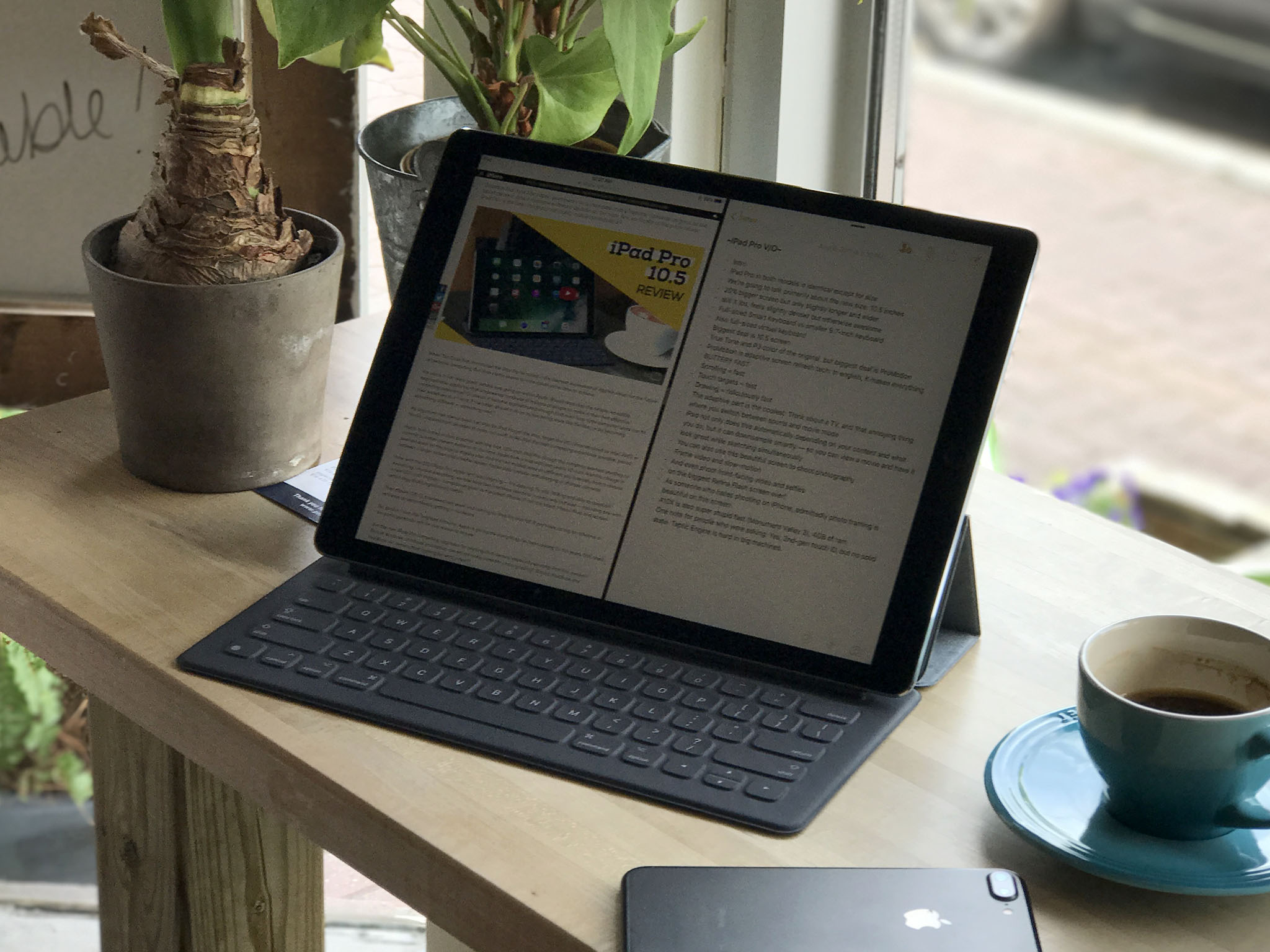
Microsoft spent years in the desert of Windows 8 to bring touch to its traditional operating system. Apple spent those years improving macOS as a traditional operating system and ramping up iOS as a next-generation, touch-first alternative.
The result isn't a touch layer but a true multitouch machine that can act laptop-like if and when you need it to, but can also the full-on iPad experience whenever you want it.
With a fold, I'm typing just as easily as I do on my MacBook. With a swirl, I'm drawing better than I ever did on any Wacom. With a lift, I'm pushing waves across a storm. With a smile, I'm watching Kara Zor El look to the stars, and then leap to them. And all of it faster, more smoothly, more colorfully, and more sharply than ever before.
Using the new iPad Pro and watching WWDC 2017, you can see what Steve Jobs saw back in 2010 and what Tim Cook has been talking about since 2015 — the future of personal computing.
The 12.9-inch iPad Pro might be too much iPad for most people. That's fine. There's a new 10.5-inch iPad Pro and a newly affordable iPad (5th generation) for anyone who wants a smaller or significantly cheaper window into the internet and apps.
If you have the previous 12.9-inch iPad Pro, I won't tell you to upgrade now, but I will tell you to avoid looking at the new one. ProMotion is legit and combined with DCI-P3, True Tone, A10X, and the iPhone 7 camera, it's a big upgrade for creatives and "productives" alike.
For those looking to buy for the first time, if you need to run macOS or Windows, you'll still need to get a MacBook or a Windows hybrid or tablet. If you want the closest thing to a Mac with a multitouch display, though, and an alternative to the traditional laptop, the 12.9-inch iPad might be exactly what you're looking for.
And with iOS 11 this fall, it might become something even more.

Rene Ritchie is one of the most respected Apple analysts in the business, reaching a combined audience of over 40 million readers a month. His YouTube channel, Vector, has over 90 thousand subscribers and 14 million views and his podcasts, including Debug, have been downloaded over 20 million times. He also regularly co-hosts MacBreak Weekly for the TWiT network and co-hosted CES Live! and Talk Mobile. Based in Montreal, Rene is a former director of product marketing, web developer, and graphic designer. He's authored several books and appeared on numerous television and radio segments to discuss Apple and the technology industry. When not working, he likes to cook, grapple, and spend time with his friends and family.
